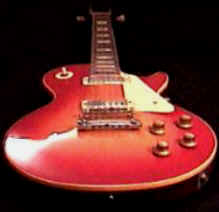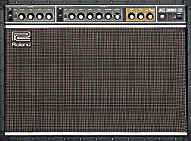|
I
wanted to include a page on this site for musicians,
"gear-heads" and music lovers to explain a
little about some of the gear that I used on the album
and other gear that I use live. To combine elements
of Rock, Folk, Jazz, Pop and even a little country into
my music, I've found that keeping my gear simple and
straight-forward gives me the ability to create different
sounds and textures, while keeping my rig fairly small
and easy to use during live performances.
I
have included some of my favorite instruments and the
reasons why I am so fond of them below.
I've
also included a few tips I've picked up along the way.
Hope
you enjoy,
Chris
|
|
The
Les Paul
 A
personal favorite, this guitar's sweet tone and easy
playability make it a favorite of mine. Used for
many lead parts and solos on the album, this guitar
sounds good through an amp or just plugged into the
mixing board. A
personal favorite, this guitar's sweet tone and easy
playability make it a favorite of mine. Used for
many lead parts and solos on the album, this guitar
sounds good through an amp or just plugged into the
mixing board.
Tip
for Les Paul players- use the Rhythm/Lead switch to
add variety to a solo or rhythm part. I find switching
it all the way to the top position for the introduction
in a guitar solo and them flipping it all the way to
the bottom during the closing section allows the solo
to build in intensity without having to use an increase
in volume. This is a good technique for a clean
amp setting, it gives the latter half of your solo a
bigger sound without blasting out your audience.
On an overdriven amp it will warm up your distortion
very naturally, but dramatically.
Back
to Top
|
|
The
Roland JC-120
 This
amp is a workhorse. It's been dropped, kicked,
bounced around, sat on, stood on, left out in the rain
so many times I've lost count and it still works like
the day I bought it used from a friend who bought it
used! The stereo chorus is great, the two twelve
inch speakers are clear as a bell, and the power is
more than enough to shake things up when the time is
right! This
amp is a workhorse. It's been dropped, kicked,
bounced around, sat on, stood on, left out in the rain
so many times I've lost count and it still works like
the day I bought it used from a friend who bought it
used! The stereo chorus is great, the two twelve
inch speakers are clear as a bell, and the power is
more than enough to shake things up when the time is
right!
Amp
Tip- When performing live, mic your amp
or use the direct out and set the amp as close to yourself
as possible. Adjust the volume at a very comfortable
level for yourself and allow the sound person to give
the audience their share (in other words keep it as
soft as you can, but don't sacrifice tone or your own
monitor) . By doing this you ensure that your
audience gets the same sounds that you hear. Not
only can a loud amp overpower a vocal or another
instrument, you can easily distort the sound going into
your house mix if the intensity of your playing becomes
greater during a performance (lets face it when the
adrenaline is pumping and the Lord is moving things
can get pretty loud!) Also in bigger rooms
the sound from your amp needs time to travel to the
back of the room causing a slight delay from when you
strum a note to when it hits the ears of the friends
who came late and ending up in the back., Many
techs will compensate for this by integrating a scattered
speaker set up. The sound tech can mix your amp
with your band, choir, worship team, etc. much better
from the back of the house taking this and other factors,
such as crowd noise into account
Back
to Top
|